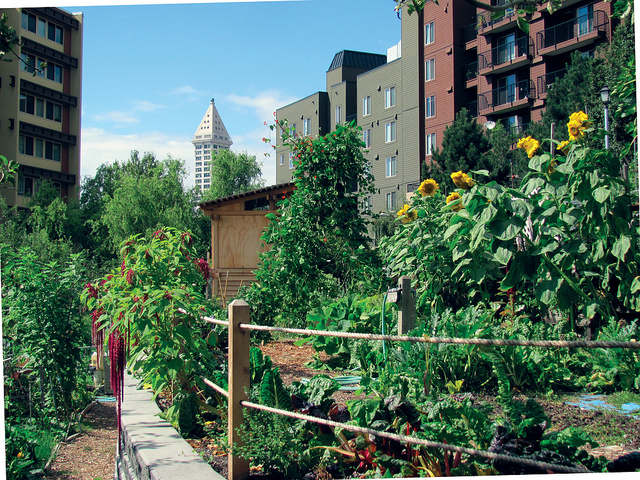The Only Guide for City Blooming
The Only Guide for City Blooming
Blog Article
The Best Strategy To Use For City Blooming
Table of ContentsThe 45-Second Trick For City BloomingThe Only Guide for City Blooming7 Simple Techniques For City Blooming10 Simple Techniques For City BloomingSee This Report about City Blooming
Interested in expanding food for sale in the City of Chicago? Below is a checklist of regularly asked inquiries regarding the guidelines and laws that growers must take into consideration when intending a metropolitan agriculture project.
The zoning modification does not modify any other codes handling composting, building authorizations, purchasing or leasing City owned building, organization licenses or ecological contamination. There are existing codes that regulate these problems and they remain completely impact and may be relevant to your project. Community yards are typically possessed or managed by public entities, civic companies or community-based companies and preserved by volunteers.
Urban farms grow food that is meant to be marketed, either on a not-for-profit or for-profit basis. Because of their industrial purpose, metropolitan farms require an organization license. Yes. An area yard is allowed to market surplus generate that was expanded on website if the sales are accessory or subordinate to the yard's key objective defined over.
A Biased View of City Blooming
Composting is enabled however only for plant product that is produced and used on site. The amount of garden compost material can not surpass 25 cubic lawns at any offered time according to the standards in 7-28-715 of the City's Municipal Code. Yes. Because the dirt at the majority of brand-new garden websites requires modifying, garden compost, soil, wood chips, or other materials can be gotten to construct or improve the growing space - sustainability.

If a building permit is called for then the hoophouse will certainly be taken into consideration an accessory building. You can find out more about the structure license demands by getting in touch with the Department of Structures. The 25,000-square-foot size limit is intended to avoid a single area garden from controling a given block or interfering with the block's existing domestic or commercial personality.
The limit does not use to gardens situated in Public Open Area (POS) areas. Can there be even more than one area yard that is 25,000 square feet on a solitary block? Fencing is not required, nonetheless, yards that have large auto parking locations may be called for to install fence or various other landscape design attributes.
Rumored Buzz on City Blooming
B1 & B2 areas require that all commercial use tasks be conducted indoors. R areas limit industrial task. The guidelines mirror the objective and intent of the Zoning Code. Is secure fencing needed for metropolitan ranches? Yes. Fencings may be needed, together with landscape design and screening, for certain car park locations and exterior job or storage areas depending on area and the details task occurring.
Yes. Urban ranches call for structure authorizations and zoning authorizations before construction. Other kinds of city review might be called for depending on details frameworks, activities, size, landscaping, licensing, public heath and stormwater management problems. Much of these needs are identified in the task design or permitting procedure, nonetheless, the applicant may be responsible to separately identify particular licenses or permits that may be needed.
Yes. The kind of permit is figured out by what is happening at the site. The Division of Company Affairs and Consumer Protection can assist identify the specific sort of business permit that's called for. Yes. Off road auto parking is needed for many industrial projects in Chicago. The needed variety of garage is based upon the number of staff members working with website and not the square video of the expanding space.
A Biased View of City Blooming

A metropolitan ranch can offer compost material produced on website, nonetheless, the procedure needs to conform with the laws in 7-28-715 of the read what he said Chicago Municipal Code. Aquaponic systems are allowed indoors on urban farms in lots of zoning areas.
Up to 5 hives or colonies of honey bees may be kept as an accessory use. However, beekeepers should register with the Illinois Division of Agriculture. For more information about the recommended zoning modification you might call the Division of Real Estate and Economic Advancement, Bureau of Planning and Zoning at 312.744.8563.
Farming in cities and metropolitan locations A metropolitan farm in Chicago. Urban farming describes numerous techniques of growing. https://www.dreamstime.com/danielnold94107_info, handling, and dispersing food in metropolitan areas. The term likewise applies to the area activities of pet husbandry, aquaculture, beekeeping, and gardening in an urban context. Urban agriculture is identified from peri-urban agriculture, which occurs in backwoods at the side of residential areas.
The smart Trick of City Blooming That Nobody is Discussing
, that seek to create social networks founded on a common ethos of nature and area holism. These networks can establish by means of official institutional assistance, coming to be incorporated right into local community preparation as a "shift town" motion for lasting city development.
The extra direct accessibility to fresh vegetable, fruit, and meat items that may be become aware through urban agriculture can boost food safety and security and food safety and security while reducing food miles, resulting in reduced greenhouse gas discharges, thus adding to environment modification mitigation. A few of the initial proof of urban agriculture originates from Mesopotamia.
Report this page